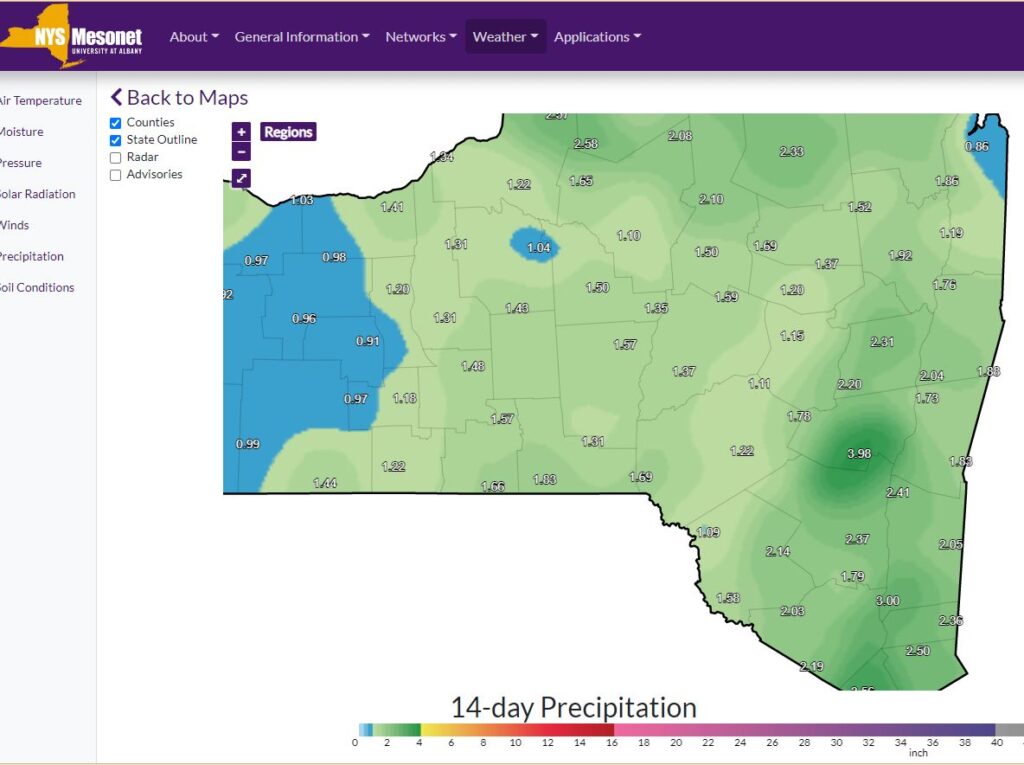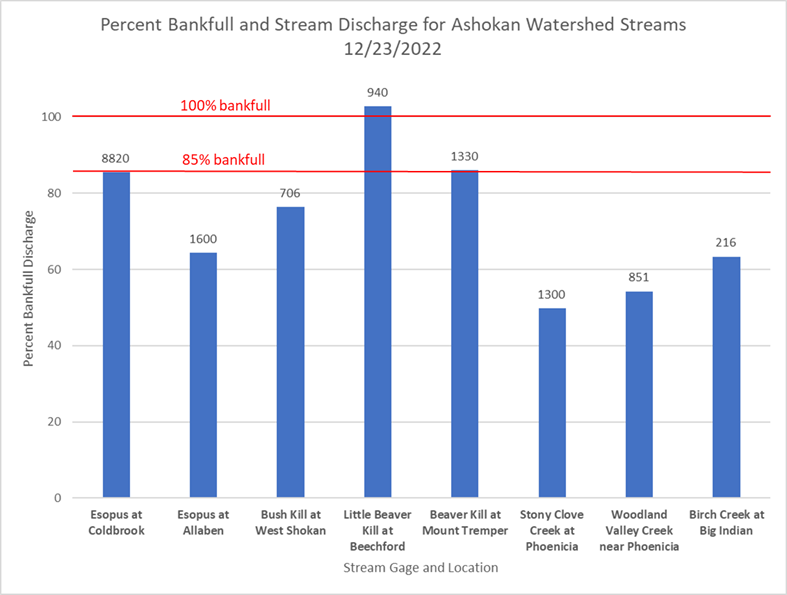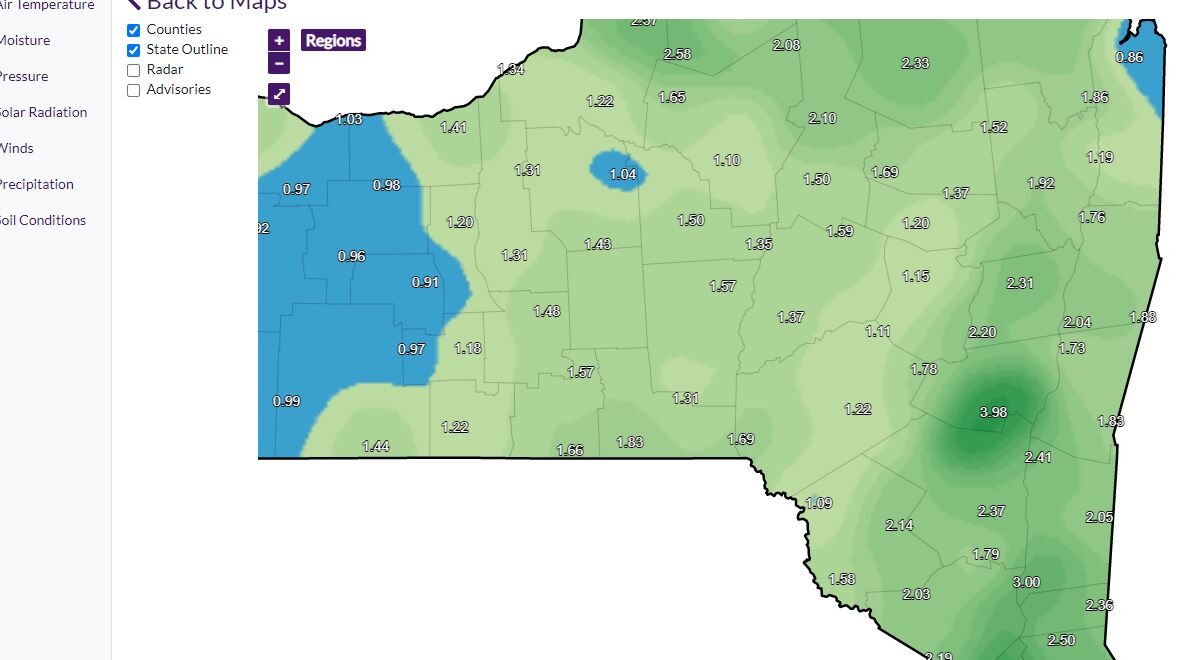There was no major flooding during the last winter storm, but preliminary flow data show there could have been geomorphic adjustment in Ashokan streams.
On December 23, 2022, AWSMP staff were monitoring for potential flooding as a storm moved through. Thankfully for the Ashokan watershed, the heaviest rain tracked north. However, Phoenicia still received the highest precipitation total at 3.4” (Times Union). The NYS Mesonet shows a dark green “bulls’ eye” of high precipitation at Tannersville in Greene County, just north of the Ashokan watershed divide.

Despite the heavy rains, most Ashokan streams didn’t reach “bankfull discharge.” Bankfull is the flow that completely fills the stable stream channel. Thus, any flow greater than bankfull is considered a flood.
Over time, near-bankfull flows do the most geomorphic work (erosion and sediment transport) because they are powerful enough to move substantial amounts of sediment and still occur relatively frequently.
The Little Beaver Kill was the only stream to exceed its estimated bankfull discharge of 915 cubic feet per second (cfs). The nearby Beaver Kill was the second highest, reaching 86% of bankfull, a flow still capable of minor flooding yet significant erosion.

No major flooding or damage was reported in the Ashokan watershed.

